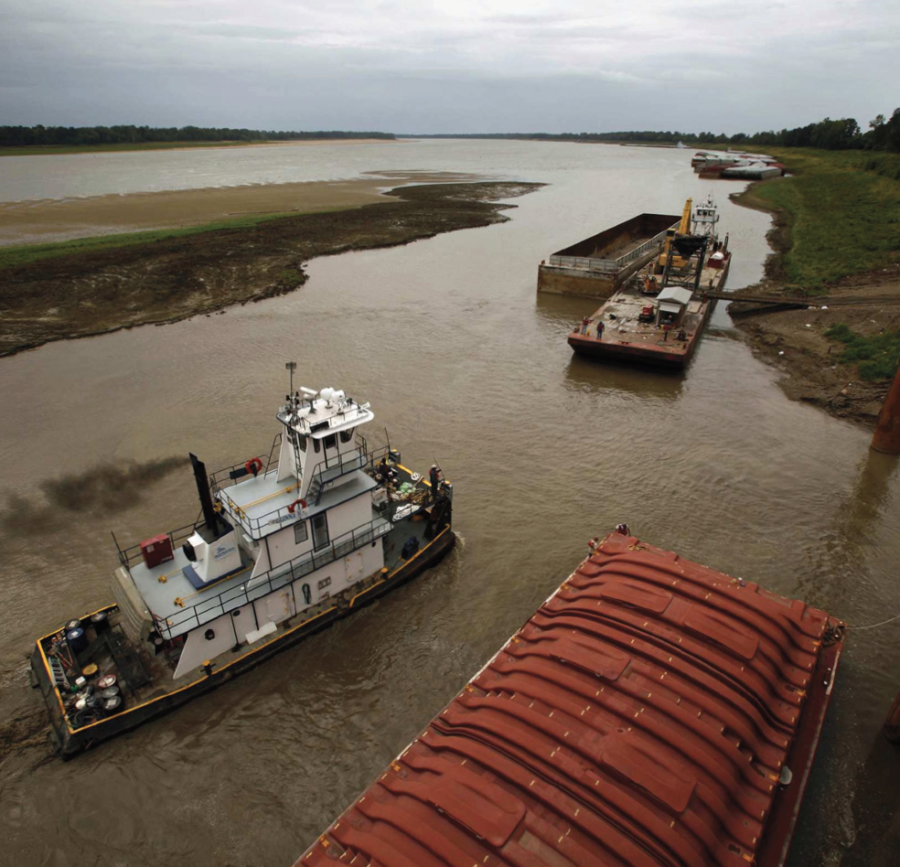Droughts bring low water levels across US
November 7, 2022
ThThe mighty Mississippi River gets its
name from the wide banks and deep
waters that flflow through the U.S. But
recently, the river’s might has dwindled
to mud and puddles.
ThThe United States is experiencing the
worst drought it has seen in decades,
leading to record low water levels on
the Mississippi River.
In some areas the river is so low that
barges and boats are having to form
lines to get through narrow channels.
In other places, they have to turn
around altogether.
Offifficials from the National Weather
Service say it is likely the river levels
could continue to lessen over the coming
weeks with no substantial amounts
of rain in the forecast.
With the problem only getting worse,
cities in Louisiana are starting to worry
about what could happen to the water
supply here in the state.
In the past few days, saltwater has
begun to creep into south Louisiana.
ThThose on low-sodium diets were advised
to drink bottled water until the
problem subsides.
Heath Jones, an emergency manager
with the Army Corps of Engineers, said
the saltwater can move upstream due
to the declined speed in water flflow.
“ThThe river doesn’t have the force right
now to keep the salt in the Gulf,” Jones
said. “ThThe drought is keeping the river
from having enough force to keep the
saltwater in the bay.”
ThThe low water levels are also causing
supply chain issues. With barges not
being able to get all the way down the
river, farmers and other suppliers are
having to turn to other options like
trains or semi-trucks.
But according to the New York Times,
it would take 16 rail cars or 62 semitrucks
to transport the same amount
as a single barge.
With suppliers now left with no
choice but to pay more to transport
their goods, Americans can expect to
see a continued rise in inflflation.
According to the National Weather
Service, extreme drought is only one
problem of many that will continue
to occur if nothing is done to combat
climate change.
Residents across the country are
hopeful water levels will rise in the
coming weeks, but until the U.S.
experiences some rain, those around
the river will continue to be stuck in
the mud.



